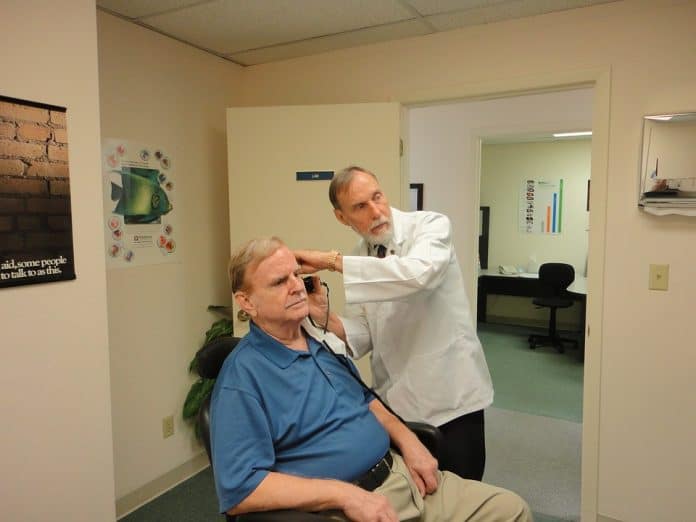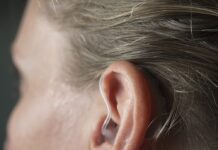
Hearing loss is one of the most prevalent chronic conditions affecting geriatrics in the United States. Frequently, hearing loss goes unnoticed or its impact is underestimated since hearing loss is an “invisible handicap.” Untreated hearing loss has the potential to negatively affect interpersonal relationships, increase stress and fatigue, cause depression, frustration, anger, low self-esteem and a sense of isolation. It has been well documented that proper treatment, intervention strategies and support services can eradicate undesirable effects of a hearing impairment.
The National Institute on Deafness and Communication Disorders (NJDCD) suggests the following questions to help with the identification of a hearing loss: 1. Do people complain that you turn the television or radio too high? 2. Do you find yourself asking people to repeat? 3. Do you misunderstand what others are saying and respond inappropriately? 4. Do you have trouble following a conversation when two or more people are talking at the same time?
Recognizing the signs of hearing loss and making the appropriate referral to hearing health care professionals is the next step.
Audiologists can perform a complete hearing evaluation to verify that hearing loss exists, describe the type and cause, explain the degree of hearing loss, evaluate the impact of hearing loss on the individual and family members and recommend appropriate treatment strategies. Quite often, it is difficult to communicate with the hearing impaired individual. Some communication strategies and methods that are often successful in communicating with the hearing impaired individual include: a) Getting the person’s attention before speaking. b) Facing the listener while speaking. c) Maintaining eye contact. d) Allowing adequate light to fall on the face of the speaker. e) Using facial expressions and features to convey the meaning. f) Speaking clearly, a little more slowly and in short sentences. g) Speaking in a normal tone of voice.
Caregivers and/or family members should consider the auditory needs of the elderly person with the hearing loss in one to one and group communication environments. When hearing loss has been identified, caregivers should explore alternatives for compensating the loss and maintaining adequate communication strategies. These options may include hearing aids and other assistive listening devices as well as modification of their environment. In addition to hearing aids, auxiliary aid options include pocket talkers, FM personal systems, induction loops, infrared systems and telephone equipment, including TTYs. In addition, for the severely hearing impaired, visual and vibrating warning systems (smoke alarms, door bells and alarm clocks), caption television; real-time captioning and computer desk assisted note taking are available. Environmental modifications such as eliminating or reducing background noise and visual distractions, removing visual objects which obstruct the view of the listener and sound proofing rooms (e.g. using acoustic tiling, draperies and carpeting), managing room temperature, arranging for comfortable seating and sitting in a circle, all contribute to an improved listening environment.
Dr. Izzy and his staff are always available to answer your questions about hearing care. Feel free to visit our website at www.gardenstatehearing.com






